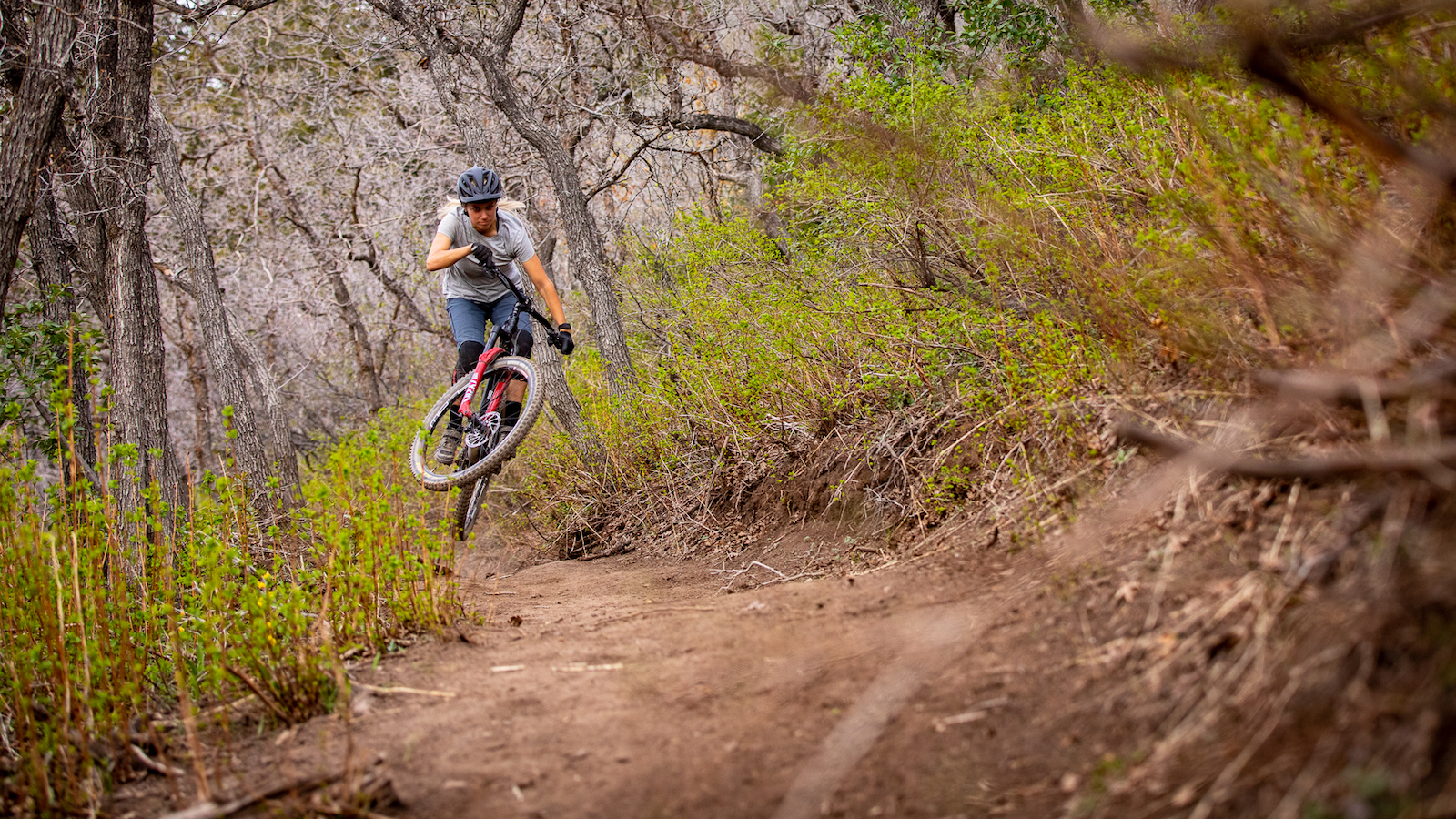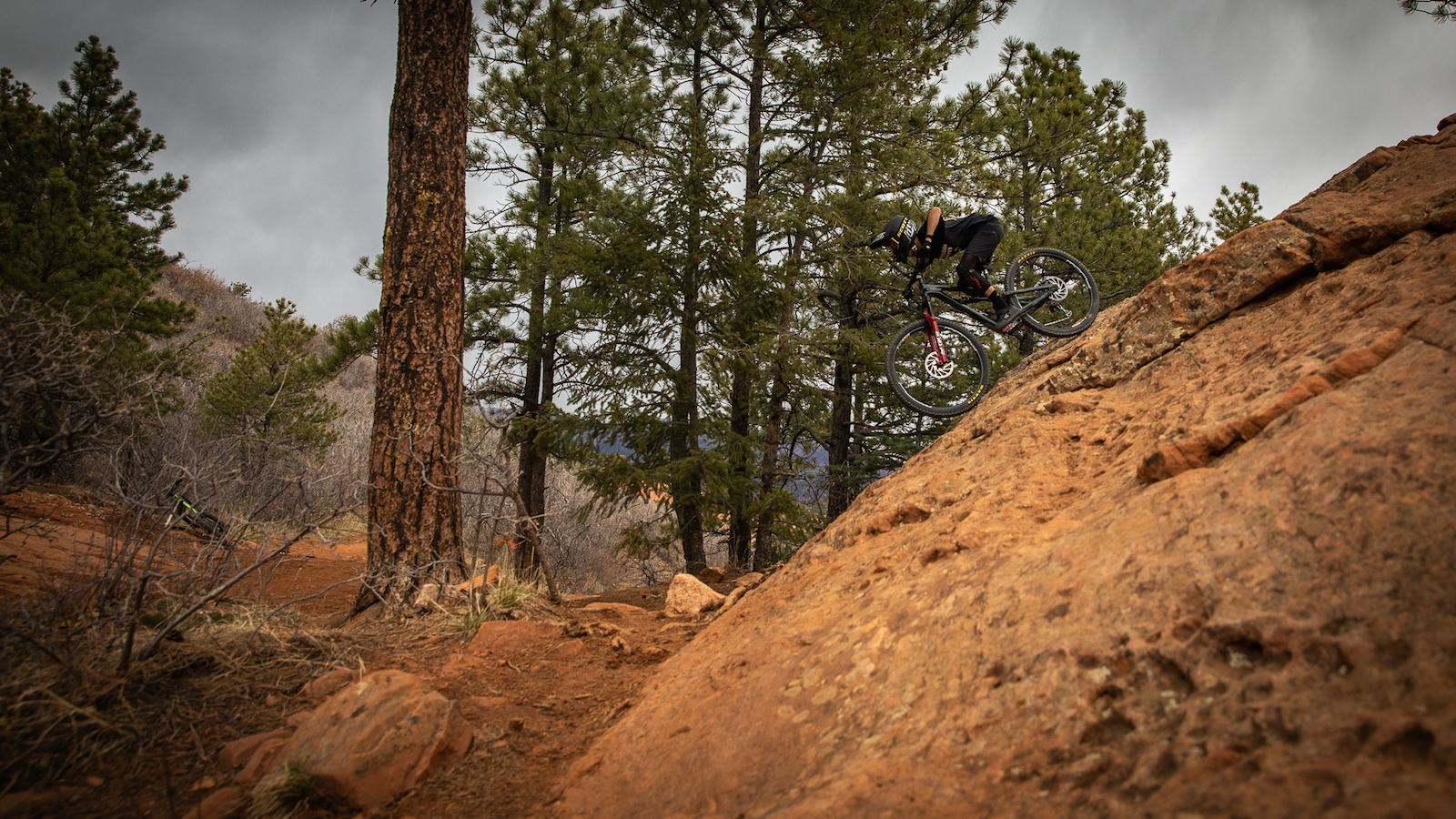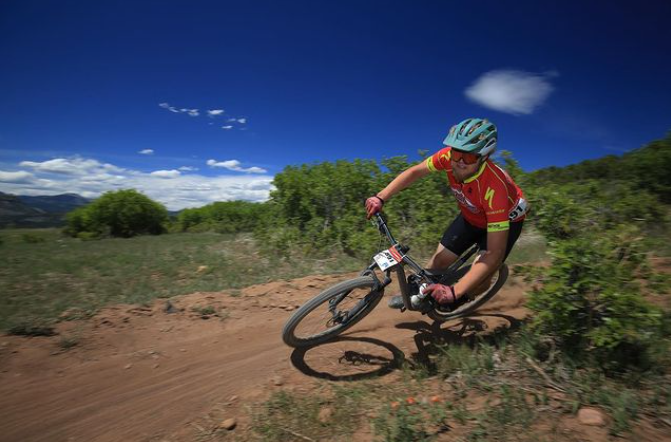Kera Linn: Breaking into elite enduro racing
US enduro racer Kera Linn speaks with Bike Perfect about her 2021 season, breaking into Enduro World Series racing, and the health of gravity racing

At the beginning of the year, American Kera Linn joined the Cannondale Mountain Team as a relatively unknown name. Top race results over the summer, such as winning the Big Mountain Enduro Series overall title, have made her one of the fastest pro women in the US.
Bike Perfect spoke with Linn recently as she enters into her off-season. Over the winter she'll prepare to compete in more Enduro World Series races in 2022. In the following conversation, Linn tells us about her 2021 season and what it's like to break into elite-level enduro mountain biking.
Bike Perfect: How would you sum up your 2021 season?
Kera Linn: It was such a fun season for me. I did the majority of my racing in the United States and then finished off with a month-long trip in Europe. I had one main goal this year, kind of switching from downhill racing last year to enduro this year, I wanted to have good results but also just stay consistent throughout the season. So I mean I didn't put pressure on myself to get first place in every race or anything like that but just stay consistent and build confidence throughout the year.
BP: What has it been like switching from downhill to enduro?
KL: It's been a good switch for me. The hardest part is the endurance just because it takes time to build the endurance over time and build strength and power and all that sort of stuff. So that is kind of coming along as it should. But besides that, I like racing on an enduro bike better than a downhill bike so that's been a good transition for me. I like being on the bike all day and I like the whole, physical challenge of having to go up the mountain and save enough energy for the physical downhills, and so I really liked the format of enduro.
BP: What was your bike setup this year?
KL: The Cannondale Jekyll is a beast. It doesn't have as much travel as a downhill bike but for an enduro bike, I have 165mm in the rear and 180mm upfront. So it's almost like a downhill bike, but it's a lot more manageable for me. Obviously, I can pedal it up the mountains and ride it down and handle it a little bit better than I did with the downhill bike. But yeah, another big upgrade on the Jekyll this year is the high pivot. I really like riding the high pivot, just how the rear wheel moves backward and up and it just eats up all the bumps. It's really good on technical sections and handles and does really well but carries good speed.

- Best enduro mountain bike
- Enduro mountain biking: everything you need to know
BP: What was your proudest moment from the season?
KL: I'd say my proudest race was probably the last US race in Durango. It was a Big Mountain Enduro race. And I finished second place to Jill Kintner, who's awesome. She's obviously a very successful, great rider. And so that was just a really good result for me because it was a long day on the bike so it was challenging. We had a couple of backcountry stages and then we also had a pretty gnarly downhill stage, which was a good challenge. It was a good competition with several other top US riders so I was happy to finish second there. And then that second place confirmed me winning the overall for the whole Big Mountain Enduro series.
BP: What was your experience like racing Enduro World Series events in Europe?
KL: Towards the end of the season, we decided to head over to Europe to race the last two Enduro World Series and also the Trans Madeira race on the island of Madeira. Basically, the point for me was just to experience the highest level of racing and enduro mountain biking and to prepare me for 2022.
In Finale, Italy, it was the most physical and hardest day I've ever had on the bike. It was a very, very challenging day. We climbed about 6500 feet and that was over about six hours. The tracks weren't that challenging; they weren't that gnarly or technical, but as a whole, the whole day was challenging, just because we had short transfer times, really long transfers and then pretty long downhills.
And then Scotland was completely different. The transfers weren't as challenging to get to, and the tracks weren't very long at all, but it was extremely muddy and just a totally different type of riding.
BP: What are your plans for the off-season?
KL: My biggest offseason goal is building endurance and building power on the bike primarily for the Enduro World Series. And then my other goal is to build skill in wet riding. So my experience in Scotland was a bit eye-opening. I live in Utah, and we do a lot of dry, dry riding here so the wet is an extra challenge for me.

BP: How would you gauge the health of women's enduro racing in the US and abroad?
KL: The US scene is pretty strong for both downhill and Enduro. I know at US National Champs, we had 20 pro women in downhill and 20 different pro women in enduro without much overlap so there are a lot of women competing in the US. But then it's challenging for American riders to compete internationally. There's a number of reasons. One, lots of riders don’t have the funding and support to go travel internationally and many of the EWS races are in Europe. Obviously, that costs a lot and it depends on the support for the rider if they can fund that.
When we do get over there, there are extra challenges for both women and men. For Americans, because we're traveling we have to adjust to the time zones. And then the tracks are typically different than what we have here in America. For enduro, our tracks in America are more wide-open and high speed. Then in Europe, they are tighter singletrack with a lot of switchbacks. It depends on the location, but generally, it's a different style of riding so it's harder for us to adjust when we go over there because we don't practice that kind of riding in America. Not only are we adjusting to the to the new culture into the time zone, but also just the challenging are the tracks the difference in the tracks.
BP: How do you think the sport can attract more women to gravity racing and riding?
KL: I would just say for women, just to try it out, and the sport is growing in general. There are a lot more women on bikes every year. As they develop their skill, just like I did, just try a race, see if you like it. You don't have to be professional your first year, your 20th year, or ever. Just have fun with it and work your way up.
I mentioned that there were like 20 US women who competed at National Champs in the United States. Well then at the Italy EWS that I went to there were only three US women. And then at Scotland EWS, it was just me. I was the only US racer.
I would say that the biggest challenge is having the funding and support to travel all the way across the world to race. There's a lot of women that can't do it out of pocket or who don't have the support so there's no incentive for them to travel all the way across the world.
Ryan Simonovich has been riding and racing for nearly a decade. He got his start as a cross-country mountain bike racer in California, where he cultivated his love for riding all types of bikes. Ryan eventually gravitated toward enduro and downhill racing but has also been found in the occasional road and cyclo-cross events. Today, he regularly rides the trails of Durango, Colorado, and is aiming to make a career out of chronicling the sport of cycling.
Rides: Santa Cruz Hightower, Specialized Tarmac SL4

